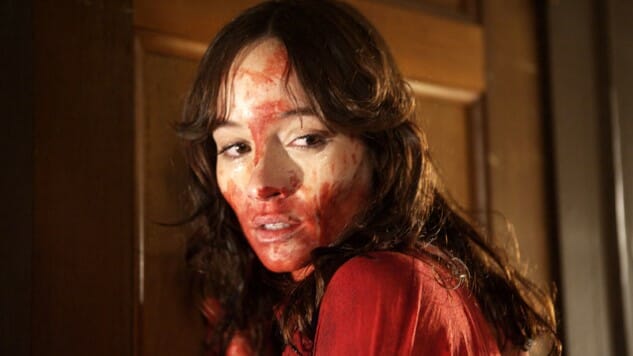The Best Horror Movie of 2009: The House of the Devil

This post is part of Paste’s Century of Terror project, a countdown of the 100 best horror films of the last 100 years, culminating on Halloween. You can see the full list in the master document, which will collect each year’s individual film entry as it is posted.
The Year
The decade comes to a close in strong fashion, with an eclectic slate of films that accurately represent everything going on in 2000s horror: Above average studio fare (Zombieland, Drag Me to Hell), crazy or audacious indie stuff (The Loved Ones, Triangle, Antichrist) and the occasional international film (Thirst) to spice things up. All in all, practically every sub-genre is represented here, although part of that is due to the overall rise in horror titles—as the streaming era well and truly begins, there are now more avenues than ever to watch these movies, especially low-budget horror films. Within a few more years, “direct-to-VOD” will become the standard for much low-budget horror fare, replacing the direct-to-video era driven by physical rentals.
Awarding this year to Zombieland in the #1 spot certainly seems like it would be a valid move, at least in terms of the splash the horror comedy made in 2009, becoming the highest-grossing zombie film of all time (at least until World War Z, bleh). And indeed, in a world where Shaun of the Dead hadn’t been released in 2004, the arrival of Zombieland would likely have felt like a revelation in horror comedy, but with that previous classic’s attitude to guide it, the result here was merely a very entertaining time at the movies. Benefitting from perfect casting, especially in the form of a playfully deranged Woody Harrelson, Zombieland was perfectly positioned to ride the cresting zombie wave in pop culture, which would lead to the pilot episode of The Walking Dead in 2010. The next few years represent Peak Zombie, at least in terms of the density of releases, especially indie ones.
Drag Me to Hell is another strong effort with a bit more intent at genuine fright behind it, although Sami Raimi’s direction almost can’t help but embrace a certain sense of dark humor—it’s essentially baked into his identity as an artist at this point, and whatever he does carries a wry humor with it. In particular, he seems bound and determined to gross out his audience as much as possible in this particular story, displaying what comes off as either an oral fixation or a commentary on protagonist Christine’s subtextual eating disorder, depending how you look at it. Tonally positioned like a lost chapter in the Evil Dead saga, sans some of the blood and guts, it was a welcome return to the horror genre for the director after years of focusing on Tobey Maguire’s Spider-Man.
Not to be forgotten is the exceedingly twisty indie horror-thriller Triangle, a film with a title that doesn’t quite do its complexity justice. Feeling quite a bit like a more horrific version of Spanish director Nacho Vigalondo’s underseen time-travel thriller Timecrimes, Triangle is a mystery set on an abandoned ocean liner, where literally nothing is as it first appears. Trying to describe this particular film is an effort in futility—suffice to say, if Möbius strip movies are your thing, this one is essential.
Other notables for this frame include Jennifer’s Body, which was derided upon release but reclaimed by critics in recent years, along with the revival of the “Nazi zombie” genre in Dead Snow and the bizarre blend of sex and pop-science found in Vincenzo Natali’s Splice. This is certainly not a year lacking in variety.